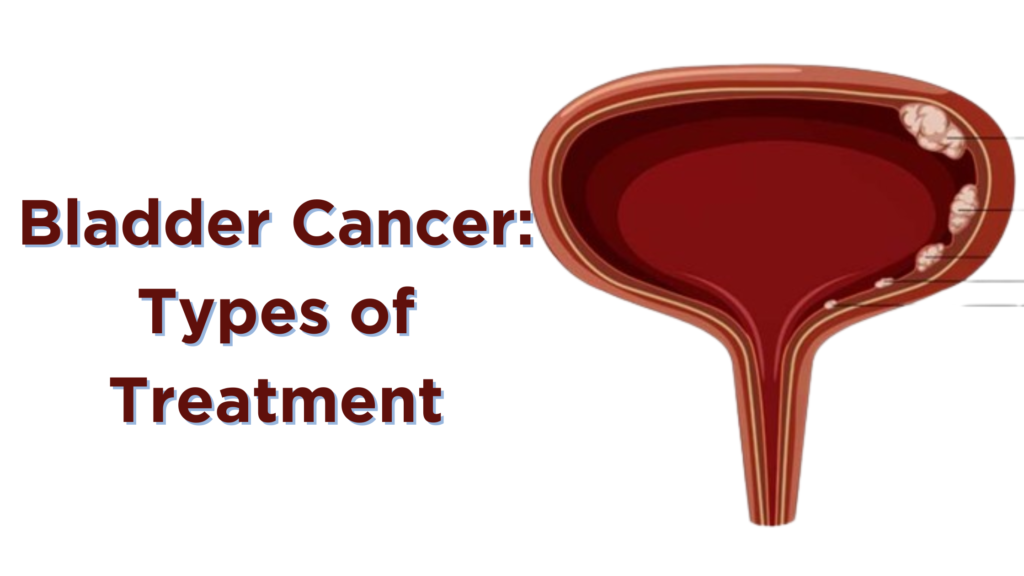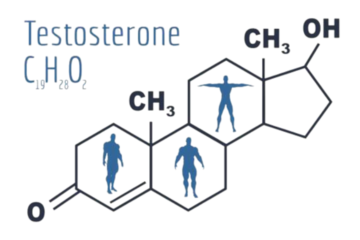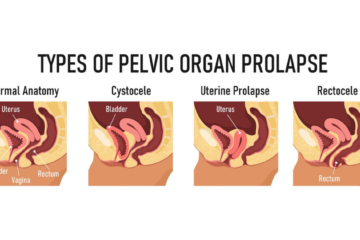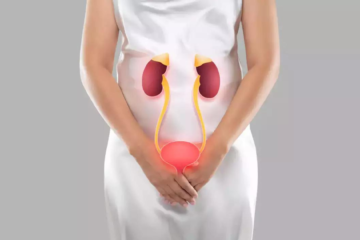
Embarking on the journey of a bladder cancer diagnosis can be a daunting experience, both for the individuals directly affected and their loved ones. As one of the most prevalent cancers globally, bladder cancer demands a nuanced approach to treatment due to its diverse nature and varying stages. In this blog post, we will unravel the intricate web of options available for treating bladder cancer, shedding light on the types of treatments that clinicians may employ to combat this formidable adversary.
Understanding the landscape of bladder cancer treatment is crucial, as it empowers patients and their support networks to make informed decisions that align with their unique circumstances. From surgical interventions and immunotherapy to chemotherapy and radiation therapy, each avenue of treatment serves a distinct purpose in the battle against bladder cancer. Join us as we explore the arsenal of medical interventions designed to navigate the complexities of bladder cancer and pave the way towards hope, healing, and a brighter future.
Surgery
Certainly, let’s delve into more detail about each type of surgery for bladder cancer.
- Transurethral Resection of Bladder Tumor (TURBT)
Transurethral Resection of Bladder Tumor, commonly known as TURBT, plays a pivotal role in both diagnosing and treating early-stage bladder cancer. This minimally invasive surgical procedure is primarily employed for superficial tumours that have not penetrated the bladder wall.
Procedure
Preparation: The patient is usually given anaesthesia, and a cystoscope – a thin tube with a camera – is inserted into the bladder through the urethra.
Removal or Biopsy: The cystoscope allows the surgeon to visualize the inside of the bladder. Using special instruments passed through the cystoscope, the surgeon can then remove the abnormal tissue or take a biopsy for further examination.
Treatment of Early-Stage Cancer: TURBT is particularly effective for treating tumours that are confined to the inner layers of the bladder. The removal of cancerous tissue aims to eliminate or reduce the cancer cells, and in some cases, this procedure alone may be sufficient for treating early-stage cancer.
Biopsy for Diagnosis: TURBT is crucial for obtaining a biopsy sample, which helps in determining the type and stage of bladder cancer. This information guides subsequent treatment decisions.
Considerations
- TURBT is generally an outpatient procedure, and recovery time is relatively quick.
- Postoperative care may involve managing temporary side effects such as blood in the urine and bladder irritation.
- Radical Cystectomy
Radical Cystectomy is a more extensive surgical intervention recommended for cases where bladder cancer has infiltrated the muscle layer or has become more advanced. This procedure involves the removal of the entire bladder along with surrounding lymph nodes.
Procedure
Complete Bladder Removal: In men, the prostate and seminal vesicles may be removed, while in women, the uterus, ovaries, and part of the vagina may be removed. The goal is to eradicate as much cancerous tissue as possible.
Lymph Node Dissection: Surrounding lymph nodes are often removed and examined to determine if cancer has spread beyond the bladder.
Urinary Diversion: Since the bladder is removed, a new pathway for urine to exit the body must be created. This is known as urinary diversion. Options include creating a pouch from a portion of the small intestine or connecting the ureters directly to the skin surface.
Considerations
- Radical Cystectomy is a major surgery with a more extended recovery period compared to TURBT.
- The procedure has significant implications for urinary and sexual function, and patients may need ongoing support and counselling.
- Partial Cystectomy
Partial Cystectomy is a surgical option reserved for select cases where bladder cancer is localized and has not invaded the entire bladder. Unlike radical cystectomy, only a portion of the bladder containing the cancerous tissue is removed.
Procedure
Localized Tumor Removal: The surgeon identifies and removes the specific area of the bladder affected by cancer while sparing the remaining healthy bladder tissue.
Preserving Bladder Function: The aim is to preserve as much bladder function as possible, making this procedure suitable for cases where complete bladder removal is not necessary.
Considerations
- Partial Cystectomy is typically considered for tumours that are limited to a specific region of the bladder.
- Since a significant portion of the bladder is preserved, there is usually less impact on urinary function compared to radical cystectomy.
Immunotherapy
- Checkpoint Inhibitors
Checkpoint inhibitors are a class of immunotherapy drugs designed to enhance the body’s natural immune response against cancer cells. In the context of bladder cancer, drugs like pembrolizumab (Keytruda) and atezolizumab (Tecentriq) have demonstrated significant efficacy, especially in cases of advanced bladder cancer that may not respond well to traditional chemotherapy.
Mechanism of Action
Blocking Immune Checkpoints: Immune checkpoints are proteins that regulate the immune response, preventing it from attacking healthy cells. Cancer cells often exploit these checkpoints to evade detection. Checkpoint inhibitors target specific proteins, such as PD-1 (programmed cell death protein 1) and PD-L1 (programmed death ligand 1), to disable the “brakes” on the immune system.
Reactivating Immune Response: By blocking these checkpoints, the drugs unleash the immune system, allowing it to recognize and attack cancer cells more effectively.
Efficacy
- These drugs have shown promise in improving survival rates and extending the progression-free period for patients with advanced bladder cancer.
- However, not all patients respond equally, and ongoing research aims to identify biomarkers that can predict which individuals are more likely to benefit from checkpoint inhibitor therapy.
Side Effects
- While generally well-tolerated, checkpoint inhibitors can cause immune-related side effects, such as fatigue, rash, diarrhoea, and in rare cases, more severe complications affecting organs like the liver, lungs, or colon.
- BCG Therapy
Bacillus Calmette-Guérin (BCG) therapy is a unique form of immunotherapy specifically utilized for treating superficial bladder cancer. It involves the instillation of the BCG vaccine directly into the bladder, where it activates the immune system to target and destroy cancer cells.
Mechanism of Action
Stimulating Immune Response: BCG is a weakened form of the bacteria that causes tuberculosis. When instilled into the bladder, it triggers a localized immune response, attracting immune cells to the area.
Direct Attack on Cancer Cells: The activated immune cells, particularly macrophages and T cells, recognize and attack cancer cells in the bladder lining.
Efficacy
- BCG therapy has proven highly effective in reducing the risk of bladder cancer recurrence, especially for patients with non-invasive, superficial tumours.
Side Effects
- Common side effects include bladder irritation, urgency, and frequency of urination.
- Systemic side effects are uncommon but may include fever and flu-like symptoms.
Combination with TURBT
- BCG therapy is often used in conjunction with Transurethral Resection of Bladder Tumor (TURBT), especially for patients with high-risk superficial bladder cancer.
- TURBT removes visible tumours, while BCG targets residual cancer cells and reduces the likelihood of recurrence.
Chemotherapy
- Intravesical Chemotherapy
Intravesical chemotherapy is a specialized form of treatment for bladder cancer that involves the direct delivery of anti-cancer drugs into the bladder. This approach is particularly effective for targeting residual cancer cells within the bladder lining after surgical procedures like Transurethral Resection of Bladder Tumor (TURBT) or in combination with Bacillus Calmette-Guérin (BCG) therapy.
Procedure
Catheter Insertion: A catheter is used to introduce the chemotherapy drugs directly into the bladder. The catheter is typically inserted through the urethra.
Retention and Treatment Period: Once the chemotherapy drugs are instilled, the patient is instructed to retain the medication within the bladder for a specified period. This allows the drugs to come into direct contact with the bladder lining and target any remaining cancer cells.
Drainage: After the prescribed retention time, the patient is allowed to void, eliminating the chemotherapy drugs from the bladder.
Common Drugs Used
- Mitomycin C: A commonly used drug in intravesical chemotherapy, mitomycin C inhibits DNA synthesis in rapidly dividing cells, including cancer cells.
- Gemcitabine: This drug interferes with the growth of cancer cells by disrupting DNA replication.
Indications
- Intravesical chemotherapy is often employed as an adjuvant therapy following TURBT to reduce the risk of cancer recurrence.
- It can also be used in conjunction with BCG therapy to enhance the efficacy of treatment and lower the chances of cancer returning.
Side Effects
- Side effects are generally localized to the bladder and may include irritation, burning sensation during urination, and blood in the urine.
- Systemic side effects are rare due to the localized nature of the treatment.
- Systemic Chemotherapy
Systemic chemotherapy is a more comprehensive approach used in cases where bladder cancer has advanced, infiltrating tissues beyond the bladder, or has metastasized to other organs. Unlike intravesical chemotherapy, systemic chemotherapy involves the administration of anti-cancer drugs through the bloodstream, allowing them to circulate throughout the body and target cancer cells at various locations.
Procedure
Intravenous Administration: Chemotherapy drugs, such as cisplatin, gemcitabine, or a combination of drugs, are administered directly into the bloodstream through a vein.
Circulation and Targeting: The drugs travel throughout the body, reaching cancer cells in the bladder as well as those that may have spread to distant organs.
Treatment Cycles: Systemic chemotherapy is typically administered in cycles with rest periods to allow the body to recover.
Common Drugs Used
- Cisplatin: A platinum-based chemotherapy drug that interferes with the DNA replication process in cancer cells, preventing their growth.
- Gemcitabine: As mentioned earlier, gemcitabine disrupts DNA replication, impeding cancer cell growth.
Indications
- Systemic chemotherapy is employed for advanced bladder cancer stages (Stage III and IV) or when cancer has spread beyond the bladder.
Side Effects
- Systemic chemotherapy can have more pronounced side effects due to its impact on rapidly dividing normal cells.
- Common side effects may include nausea, fatigue, hair loss, and increased susceptibility to infections.
Combination Therapies
- In some cases, systemic chemotherapy may be combined with other treatments, such as surgery or radiation therapy, to maximize effectiveness.
Radiation Therapy
- External Beam Radiation
External Beam Radiation Therapy (EBRT) is a non-invasive treatment modality that utilizes high-energy rays, such as X-rays or photons, to target and eradicate cancer cells. In the context of bladder cancer, EBRT is employed by directing these rays precisely at the bladder from outside the body.
Procedure
Treatment Planning: Before the initiation of radiation, a detailed treatment plan is developed using imaging studies (CT or MRI) to precisely delineate the bladder and surrounding structures. This ensures accurate targeting.
Treatment Sessions: The patient undergoes short, daily treatment sessions over several weeks. Each session typically lasts a few minutes, and the cumulative dose is carefully calibrated to maximize cancer cell destruction while minimizing damage to healthy surrounding tissues.
Positioning and Immobilization: The patient is positioned on a treatment table, and immobilization devices are used to ensure consistent positioning during each session.
Indications
- Adjuvant Therapy: EBRT may be used after surgery (such as radical cystectomy) to eliminate any residual cancer cells and reduce the risk of local recurrence.
- Definitive Treatment: In cases where surgery is not an option or when the tumour is inoperable, EBRT can be used as a primary treatment for bladder cancer.
- Palliative Care: For advanced cases where a cure may not be achievable, EBRT can be employed to alleviate symptoms, such as pain or bleeding, improving the patient’s quality of life.
Side Effects
- Localized Effects: Common side effects are often limited to the treated area and may include fatigue, skin irritation, and changes in urinary habits.
- Long-Term Effects: Depending on the radiation dose and duration, long-term effects may include bladder irritation, potential changes in bowel habits, and a risk of secondary cancers (though rare).
- Internal Radiation (Brachytherapy)
Brachytherapy, or internal radiation therapy, involves the placement of radioactive sources directly inside or near the tumour. While less common for bladder cancer compared to other malignancies, it can be considered in specific situations.
Procedure
Placement of Radioactive Sources: Radioactive sources, often in the form of seeds or catheters, are either temporarily or permanently placed inside the bladder or surrounding tissues.
Localized Radiation: The radioactive sources emit radiation directly into the tumour, providing a high dose to the cancer cells while minimizing exposure to surrounding healthy tissues.
Temporary or Permanent Placement: In temporary brachytherapy, the sources are removed after a specific duration of treatment sessions. In permanent brachytherapy, the sources remain in place but lose their radioactive potency over time.
Indications
- Early-Stage Bladder Cancer: Brachytherapy may be considered for select cases of early-stage bladder cancer where preserving the bladder is a priority.
- Boost Therapy: It can be used as a boost to external beam radiation in cases where additional dose escalation is deemed beneficial.
Side Effects
- Localized Effects: Side effects are primarily localized to the treated area and may include temporary urinary irritation, urgency, and changes in urinary habits.
- Long-Term Effects: The risk of long-term effects, such as bladder or bowel complications, is generally lower compared to external beam radiation due to the precise targeting of the radiation sources.
Conclusion
In this exploration of bladder cancer treatments, it’s crucial to emphasize the personalized nature of these interventions. The journey through diagnosis, decision-making, and treatment is unique for each individual, shaped by factors such as the stage of cancer, overall health, and personal preferences.
As more research advances and innovative therapies emerge the landscape of bladder cancer treatment continues to evolve, offering hope for improved outcomes and enhanced quality of life. For those navigating this journey, support networks and open communication with healthcare professionals play pivotal roles.
In the pursuit of healing, let knowledge be a guiding light, and may the collaborative efforts of patients, caregivers, and the medical community pave the way toward a brighter tomorrow in the fight against bladder cancer. Together, we stand resilient, embracing the possibilities of progress and the prospect of a future where bladder cancer is not just battled but triumphed over.
Dr. Sumit Sharma is an experienced urologist, andrologist, and kidney transplant surgeon with over 20 years of clinical experience. He is the founder of the Department of Urology at multiple hospitals in Gurgaon and has established successful kidney transplant programs across the city.
With a commitment to the highest standards, Dr. Sumit Sharma ensures personalised, professional treatment, making your well-being the primary focus. Choose Dr. Sumit Sharma for outstanding Urological care in Gurgaon.



